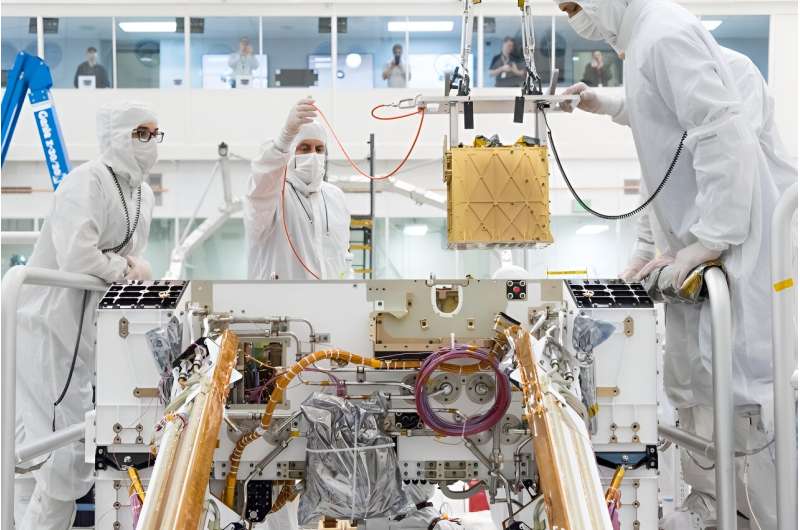After the instrument proved far more successful than its creators at the Massachusetts Institute of Technology (MIT) expected, its operations are concluding.
"MOXIE's impressive performance shows that it is feasible to extract oxygen from Mars' atmosphere—oxygen that could help supply breathable air or rocket propellant to future astronauts," said NASA Deputy Administrator Pam Melroy. "Developing technologies that let us use resources on the moon and Mars is critical to build a long-term lunar presence, create a robust lunar economy, and allow us to support an initial human exploration campaign to Mars."
Since Perseverance landed on Mars in 2021, MOXIE has generated a total of 122 grams of oxygen—about what a small dog breathes in 10 hours. At its most efficient, MOXIE was able to produce 12 grams of oxygen an hour—twice as much as NASA's original goals for the instrument—at 98% purity or better. On its 16th run, on Aug. 7, the instrument made 9.8 grams of oxygen. MOXIE successfully completed all of its technical requirements and was operated at a variety of conditions throughout a full Mars year, allowing the instrument's developers to learn a great deal about the technology.
"We're proud to have supported a breakthrough technology like MOXIE that could turn local resources into useful products for future exploration missions," said Trudy Kortes, director of technology demonstrations, Space Technology Mission Directorate (STMD) at NASA Headquarters in Washington. "By proving this technology in real-world conditions, we've come one step closer to a future in which astronauts 'live off the land' on the Red Planet."
MOXIE produces molecular oxygen through an electrochemical process that separates one oxygen atom from each molecule of carbon dioxide pumped in from Mars' thin atmosphere. As these gases flow through the system, they're analyzed to check the purity and quantity of the oxygen produced.
First of its kind
While many of Perseverance's experiments are addressing the mission's primary science goals, MOXIE was focused on future human exploration. MOXIE served as the first-ever demonstration of technology that humans could use to survive on and leave the Red Planet. An oxygen-producing system could help future missions in various ways, but the most important of them would be as a source of rocket propellant, which would be required in industrial quantities to launch rockets with astronauts for their return trip home.
Rather than bringing large quantities of oxygen with them to Mars, future astronauts could live off the land, using materials they would find on the planet's surface to survive. This concept—called in-situ resource utilization, or ISRU—has evolved into a growing area of research.
"MOXIE has clearly served as inspiration to the ISRU community," said the instrument's principal investigator, Michael Hecht of MIT. "It showed NASA is willing to invest in these kinds of future technologies. And it has been a flagship that has influenced the exciting industry of space resources."
Future focus
The next step wouldn't be building MOXIE 2.0—although Hecht and his team have learned a lot about how to design a more efficient version of the instrument. Rather, it would be to create a full-scale system that includes an oxygen generator like MOXIE and a way to liquefy and store that oxygen.
But more than anything, Hecht would like to see other technologies get their turn on Mars. "We have to make decisions about which things need to be validated on Mars," Hecht said. "I think there are many technologies on that list; I'm very pleased MOXIE was first."
Provided by JPL/NASA



